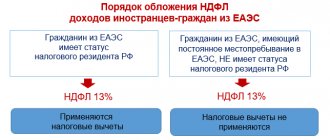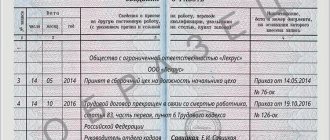What are social needs?
In addition to wages, compensation, incentive bonuses and other payments guaranteed to employees, the employer bears costs by making contributions to social needs. This makes it possible, if necessary, in situations provided for by law, to receive cash benefits and pensions.
The meaning of the very concept of “need” includes a lack of something, sometimes a vital need.
Consequently, the employer’s expenses for social needs are expenses associated with the payment of insurance contributions to funds that, if necessary, can pay a person a monetary benefit or provide assistance.
In addition, material support for employees may be provided for by local legal acts of internal use, for example:
- additional payments for employee health;
- financial assistance for organizing funerals of close relatives;
- benefits upon retirement;
- other.
Social contributions include:
Health insurance
Labor legislation guarantees working citizens the preservation of their jobs during absence:
- if there is confirmation of being on treatment;
- when a person undergoes rehabilitation after injuries.
Days of incapacity for work are paid according to a duly issued sick leave certificate.
In addition, insured persons in the event of a deterioration in their health, for preventive measures, receive free medical care guaranteed by the basic program.
Why do we need social insurance for workers?
Mandatory insurance by the employer of newly hired employees during employment provides protection against deterioration in social or financial situation under circumstances beyond the control of the employees.
Insured citizens have the right to receive social assistance if they lose the opportunity to earn a living due to:
- the onset of old age;
- disability in case of illness;
- recognition of disability as a result of an occupational disease or after injuries;
- motherhood;
- and so on.
Pension insurance
Allows a person, having reached retirement age or having lost the ability to work (partially, completely) due to an established disability, to receive monthly pension payments.
In addition, persons who were dependent on the deceased breadwinner have this right.
Social insurance contributions - interest, rate
Social protection of citizens is a guarantee of the government bodies of the Russian Federation to the population. In this regard, laws have been developed to control the process of distribution of benefits between citizens.
Social savings funds make it possible to maintain an adequate standard of living during periods of accidents or crises occurring throughout the country, when the level of income of the working population decreases.
Employers are the payers of social insurance contributions. The received funds are distributed among social funds and ensure the right to receive benefits for citizens, if necessary.
State insurance funds, non-state pension funds, and other insurance organizations can pay benefits.
If:
- A citizen needs treatment after receiving an injury or illness. Benefit payments are provided for the birth of a child or disability;
- loss of a breadwinner, provides for the maintenance of remaining dependents, including children and disabled people;
- Citizens' incomes are below the subsistence level; benefit recipients will include large families and pensioners.
Contributions to social funds from employers can be divided into two types:
- actual. Provides for payments to a third party. These include government or non-government funds. Actual deductions are made within the framework of existing social programs. Since 2001, payments have been combined into a single social tax.
Currently, three directions of payments have been defined: the Pension Fund, medical and social insurance of the Russian Federation.
The actual fund provides for contributions from industrial accidents and occupation-related diseases acquired during the work of employees. This insurance is paid by the Social Fund of the Russian Federation, to which the employer makes separate payments.
- conditional. It does not involve the involvement of third parties; it is carried out by the employer to ensure an adequate standard of living for its former employees or employees who are dependent on the organization after receiving an industrial injury.
To determine the amount of payments, the actual value of contributions made in the current period by the employer is used. These include:
- payments in case of accidents that led to partial or complete disability of the employee;
- compensation for moral damage, its amount is determined in court;
- payments to child care employees.
- the amount of severance pay upon termination of the employment contract;
- payments to employees upon liquidation of a company or reduction in staff numbers.
Bid
The rates for contributions to the pension fund have undergone significant changes in the legislative acts of the Russian Federation.
As of 2015, the general social tax rate is 30%. Employers send 22% of the wage fund to the pension fund, 5.1% goes to medical care, and the social insurance fund receives 2.9%.
Reforms are being carried out in relation to the pension fund, which change the size of rates for different categories of citizens. Thus, the new changes divided the rate in the Russian Pension Fund into two parts, for persons who chose a non-state insurance company and those who have not made a choice.
For the first, 16% is sent to the Pension Fund, and 6% is the funded part of the pension and is transferred to the Non-State Pension Fund. The pension fund also operates the concept of a maximum base for calculating insurance premiums.
The size of the limit changes annually; as of 2015, it is 711 thousand rubles. If this value is exceeded, the rate will be 10%.
There is also a maximum contribution limit for the social insurance fund. If the payment amount is 670 thousand rubles, only 10% needs to be sent to the fund. With regard to the medical fund, the limit has been abolished in connection with the draft law, which came into force in 2015.
Contributions to the Pension Fund of the Russian Federation involve a number of additional contributions for workers in heavy and hazardous industries, which also provides them with early retirement. The introduction of these rates occurred at the beginning of 2013, the size of which has now reached 6 and 4%.
Workers in underground production are subject to a higher additional rate. The remaining categories of the working population falling under the law are prescribed in Federal Law No. 174. Additional deductions are made regardless of reaching the salary limit.
You can find out about state social insurance here.
Percent
Entrepreneurs who conduct business on general terms and do not belong to the preferential category pay 30% to the social fund. But the Federal Law provides for the division of categories of employers and their payment of reduced interest.
The first category of entrepreneurs pays the following interest:
| Name | Percent |
| Russian Pension Fund | 8 |
| Social Insurance Fund | 2 |
| Compulsory Medical Insurance Fund | 4 |
These include enterprises that are engaged in the implementation of intellectual developments in the field of production.
Organizations created with funding from budget funds in a scientific direction, participating in projects or being permanent partners of companies for the development and implementation of intellectual products. They also include organizations involved in the development and implementation of computer programs.
The second category of organizations deducts:
| Name | Percent |
| Pension Fund | 20 |
| FSS | 0 |
| Compulsory Medical Insurance Fund | 0 |
This category includes entrepreneurs who use a simplified tax system in their activities. These include non-profit organizations and charitable foundations registered in accordance with the requirements of the legislation of the Russian Federation.
Pharmacy companies and individual entrepreneurs paying UTII.
The third category of enterprises make contributions to funds in the following ratio:
| Name | Percent |
| Pension Fund | 14 |
| FSS | 0 |
| Compulsory Medical Insurance Fund | 0 |
These include organizations that are participants in projects of the Skolkovo Innovation Center. This Federal Law has been in force since 2010.
The fourth category of entrepreneurs, which has preferential rates for social contributions, pays:
| Name | Percent |
| Pension Fund | 6 |
| FSS | 1,5 |
| Compulsory Medical Insurance Fund | 0,1 |
To make payments under this tariff, the organization must obtain the status of a participant in the free zone, which operates in the territory of Crimea and Sevastopol.
Employers' contributions to social insurance
Based on current laws governing the activities of social funds, all enterprises are required to make payments.
The amount of deductions is determined by the Federal Law, as well as regional regulations. The current rates are influenced by the industry in which the organization operates.
It should be noted that cases of non-payment of social contributions by an employer are not grounds for depriving a citizen of social benefits for old age, temporary disability or disability.
Violation of payment deadlines implies the employer's liability to regulatory authorities and payment of fines. To identify such violations, tax authorities carry out on-site inspections; starting from 2015, their duration will be up to six months.
Starting this year, a deferment of payments to social insurance funds will be introduced. This change has been introduced into the legislation of the Russian Federation. Previously, organizations had to pay social obligations by December 31. Now they have the opportunity to take advantage of installments exceeding a period of one year.
To do this, the company must conduct its activities with a seasonal nature or be recognized as having suffered from natural disasters. With some exceptions, budgetary organizations can receive a deferment.
Who pays insurance premiums?
Insureds making social contributions. needs for working citizens are:
- organizations, enterprises represented by the owner or manager representing the interests of a legal entity;
- individual entrepreneurs using hired labor.
The formation of social insurance funds occurs through contributions made by enterprises, organizations, and entrepreneurs.
The missing funds to cover expenses are transferred from the country's federal budget.
What payments do you need to make deductions from?
Before calculating contributions for social needs, you need to decide which payments are subject to mandatory contributions.
Contributions must be withheld from the calculation of amounts paid:
- wages for officially employed full-time employees;
- monetary compensation for unused annual leave upon dismissal;
- for services provided under civil contracts;
- royalties;
- benefits if their amounts, at the discretion of the manager, exceed the established limits.
Insurance premiums are not charged for:
- amounts for payment of sick leave, child benefits;
- compensation payments for compensation for damage to the health of workers due to the fault of the employer;
- providing employees with housing, payment of utilities,
- payment for the cost of special food;
- the amount of guaranteed benefits upon dismissal (for reduction of staff or number of employees, for health reasons, other cases);
- employer expenses associated with training (in this area) of specialists and employees undergoing advanced training courses;
- compensation by the employer of expenses to employees associated with relocation when transferred to a structural unit located at a remote distance;
- the amount of one-time financial assistance provided to compensate for material damage or harm to their health as a result of natural disasters, accidents, and other emergency situations;
- one-time cash payments at the birth (adoption) of children, if their amount does not exceed 50 thousand rubles;
- travel expenses (travel and daily expenses) for employees sent by order of the manager to other localities in order to fulfill assigned production tasks;
- financial assistance provided to subordinates by decision of the owner in the amount of up to 4,000 rubles;
- and other payments and compensations (Article 422 of the Tax Code of the Russian Federation).
Social contributions are the employer's responsibility
Results
Despite the fact that when planning expenses for contributions to extra-budgetary funds, they are calculated using a general percentage, their actual payments are made in different areas. Thus, consolidated payments of 30.2% are divided into several separate amounts:
- 22% - in the Pension Fund of the Russian Federation;
- 5.1% - in the Federal Compulsory Medical Insurance Fund of the Russian Federation;
- 2.9% - in the Social Insurance Fund for insurance for temporary disability and in connection with maternity;
- 0.2% - in the Social Insurance Fund for insurance against accidents and occupational diseases.
Almost all remuneration received under employment contracts, whether labor contracts or civil law agreements, is taken into account as an object of taxation. The list of benefits is not so large, and can be found in Law No. 212-FZ.
Individual entrepreneurs, as well as privately practicing lawyers, advocates, and notaries, transfer contributions from their income independently, unlike working citizens, for whom employers perform this function.
It is also worth remembering that from 2021 a new Chapter 34 of the Tax Code of the Russian Federation will come into force, which will regulate these payments.
Similar articles
- Basic rules for calculating insurance premiums
- How are contributions to the Social Insurance Fund calculated?
- Concept and features of the structure of insurance premiums
- FSS contributions in 2021
- Calculation of insurance premiums for sick leave
How to calculate the amount of deductions
The policyholder pays premiums in accordance with current tariffs.
Deductions for social needs from the wage fund (phot) are percentages:
- 22% – for pension provision of insured workers;
- 2.9% – for payments related to temporary disability of full-time employees, including guaranteed payments to pregnant women when taking maternity leave, benefits for the birth (adoption) of children;
- 5.1% – for the provision of medical care and preventive health measures.
Calculation of social Deductions can be made in two ways.
Option 1
The total amount of all mandatory contributions is
22% + 2,9% + 5, 1% = 30 %.
By multiplying the amount included in the estimate for salary expenses by 30%, the amount of required deductions is obtained.
Option 2
They calculate the expenses necessary for monthly payments in the billing period for each employee.
Add up the results for all employees.
The percentage of mandatory insurance premiums is calculated from the amount received.








